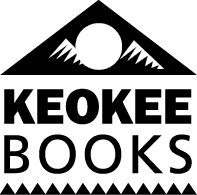‘I Was There’
From the Summer 2022 Issue
Witnesses to the JFK assassination, Glen Canyon Dam protest
Sue Vogelsinger – The John F. Kennedy Assassination
When Sagle resident Sue Vogelsinger was just 24 years old, her boss was known to the world and hers was a high-profile position. Vogelsinger was a staff member of President John F. Kennedy’s Office of the White House Press Secretary. She worked with Pierre Salinger, who described their role as directing the flow of news to tens of thousands of newspapers, magazines, television, and radio stations around the world. On November 22, 1963, Vogelsinger was on board Air Force One in President Kennedy’s cabin preparing for their next stop after Dallas, Texas. The world changed in an instant that day with the assassination of President Kennedy.
My colleague, Chris Camp, and I were in President Kennedy’s office on Air Force One updating press materials for the last stop, the Lyndon B. Johnson ranch outside of Austin. Suddenly a steward came running through the plane and told us to get ready to go. We were leaving. The President had been shot. We turned on the television on Air Force One and that is when we learned that President Kennedy had died. From that point on, much is a blur.
No one asked Chris and me to leave, but we knew we had to make room on Air Force One for Vice President Lyndon Johnson’s team and many of President Kennedy’s staff to travel back to Washington, D.C.
I was on the tarmac when President Kennedy’s body arrived back at Love Field. We stayed behind and then boarded Air Force Two along with reporters, the Texas delegation, and off-duty Secret Service agents. The atmosphere on the plane was very grim. Some members of the Texas Congressional delegation were quite vocal about their pleasure at the way the day ended. It became very tense to the point that the Secret Service agents sat with Chris and me to shield us from what was happening. We were in a state of shock.
We arrived back in Washington, D.C. around 2 a.m. the following morning and the rest of the week was nonstop, with only a few hours off to go home and change clothes. Our staff had to oversee the press that came in from all over the world, informing them of what would be covered and open to the press and what would be private.
I was very lucky to spend a lot of time in the presence of JFK. As is well known, he was smart, funny, and of course, good looking. He had the ability to make you think you could do anything. I, for one, was frequently amazed at some of the things I was able to accomplish during those wonderful days.
While President Johnson chose to keep our staff on, many of us felt we could not be effective for him as many of our hearts were not in it. I left the White House the following April to assist Pierre Salinger in his campaign to be a senator from California.
I also worked for Robert Kennedy at the time of his assassination and later worked for Ted Kennedy, as well as George and Eleanor McGovern, Jimmy Carter, and Hillary Clinton. Our last event in Washington, D.C. was a New Year’s Eve party in December 1999 at the White House. We then moved to Sandpoint to be closer to our kids and grandchildren.
Ellen Weissman – The Glen Canyon Dam “Earth First” Protest
The Glen Canyon Dam in Arizona has been surrounded by controversy since it was built in 1963. In 1981, a protest against the dam was led by Edward Abbey, an American author and environmental activist, and a radical environmental group Earth First! Sandpoint resident Ellen Weissman attended the famous protest.
I lived in Maine before moving to Flagstaff, Arizona in December of 1980. While in Maine, I was involved in anti-nuclear issues. Since first studying environmental issues in both high school and college, I believed in the capacity for solar and wind power to provide the majority of our nation’s needs.
When I moved to Arizona, I learned about the Glen Canyon Dam and that introduced me to the environmental issues of the Southwest.
The history of the Glen Canyon Dam goes back to April 11, 1956, when the Colorado River Storage Project authorized the building of Glen Canyon Dam. Seven years and three hundred million dollars later, a dam 710 feet high was built. In 1963, Glen Canyon was closed and Lake Powell, the nation’s second largest artificial lake, was created. At that time, I was growing up on the East Coast.
The protest led by Edward Abbey took place in March of 1981, just three months after I moved to Flagstaff. It took us about two and a half hours to drive. We stayed there for about two hours and listened to Edward Abbey’s speech as well as a couple of others who spoke. The portion of the day sponsored by Earth First! lasted about 45 minutes.
The protesters unfurled a sheet of plastic along the dam which was made to look like the dam was cracked. It was incredibly realistic. It rolled down the side of the dam and looked just like a crack would look. That, as well as Ed Abbey’s speech, was compelling.
It was a peaceful protest with park rangers and dam personnel on hand in case of conflict, but nothing happened. There were about 50 to 75 of us in attendance, and we were stretched out along the side of the dam. About 10 to 15 of those folks were the ones who put on the event and demonstrated the “crack.”
There is currently a lot of discussion about taking down the dam. The water level of Lake Powell has dropped considerably, and if it keeps dropping at the rate it is now, at some point there won’t be enough water to make the turbines run to produce the electricity. It is located in an area that could easily be turned into solar and wind farms.
I would love to see the Glen Canyon Dam taken down; however, there are other considerations besides electricity, such as the water levels affecting vegetation. Also, one must take into consideration the recreation aspects, such as boating and river running, on the Colorado River and in the Grand Canyon. Area towns would be affected as well as the farmers and agricultural industry and cities downstream. It’s a complicated issue.




Leave a Reply